You will be met on arrival in Ahmedabad. If you arrive early in the day there will be time for exploration of the city including a visit to the Sarkhej royal complex or a walking tour in the area around your hotel, which is a restored heritage villa owned by the family of wealthy industrialist Mangaldas Girdhardas.In the evening visit the night markets. Overnight in Ahmedabad
North West India Tour Itineraries - Highlights Of Gujarat
Gujarat is a diverse and vibrant place, it is slowly emerging from the shadow of its famous neighbouring state, Rajasthan, as a tourist destination.
Discover its many hidden treasures, savour the history and exquisite architecture, enjoy the rich wildlife parks, colourful festivals and eclectic traditions - Gujarat has something for everyone.
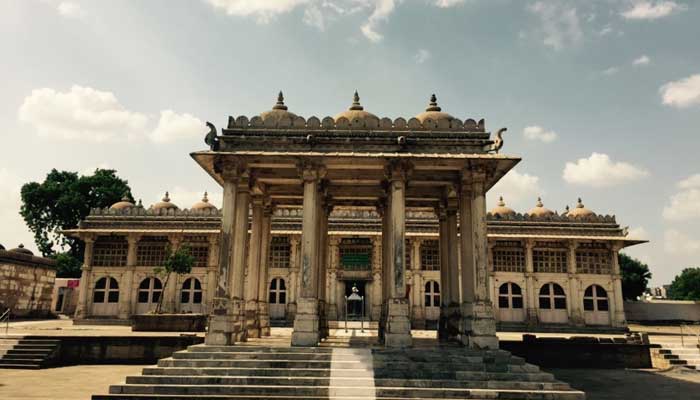
Day 1 : Ahmedabad
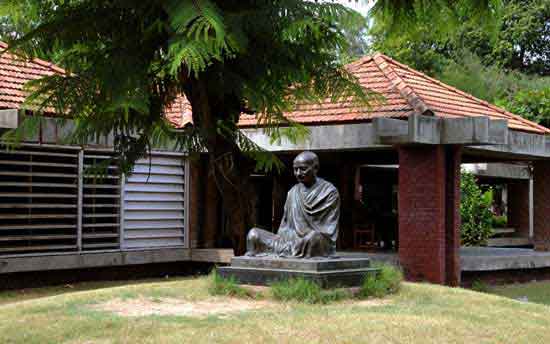
Day 2 : Ahmedabad
In the morning, visit the Calico Museum of Textiles, one of India’s leading specialized museums. The collection on display here is quite breathtaking; such is the beauty and intricacy of the work from the past several centuries. The textiles include double-ikat silk sarongs made in Patan for the Indonesian market, chintz and curtains made for Dutch, British and Portuguese colonial powers in Gujarat, floral embroidery from Punjab, shawls from Kashmir, and more besides. Later visit the home and ashram of Mahatma Gandhi - an oasis of calm and tranquility in the heart of this busy city, and contrasting places of worship- mosques with their austere lines and simplicity, and Jain temples whose carvings know no bounds when it comes to embellishment and intricacy. In the afternoon, visit Sarkhej royal complex, Shahibag Palace - a Moghul garden palace with relics of the poet Tagore, and the Vishala Village complex with its superb utensils museum. Overnight in Ahmedabad
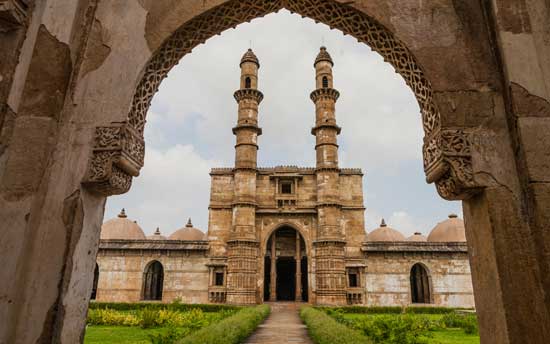
Day 3 : Ahmedabad – Palitana
In the morning join the local Historical Society’s heritage walk in ‘old’ Ahmedabad. This daily walking tour offers an opportunity to see the oldest parts of the city - narrow lanes lined with the beautifully carved wooden facades of havelis, small shrines and temples, and a myriad of ‘slice-of-life’ moments which are only truly glimpsed when you get out amongst life on the street on foot. The walk ends at the Jama Masjid, Ahmedabad's grandest mosque. Return to House of MG for breakfast and then check out and begin the drive to Palitana. En route visit Lothal - a major Indus Valley Civilization site where a port and small city flourished over 4000 years ago.There have been extensive excavations here which give some idea of how the place might have looked in its pomp. There is also a small museum on site with interesting artifacts. Continue on to Velavader National Park to see some of India's largest blackbuck antelope herds, as well as flamingos, pelicans, numerous other water birds and perhaps the elusive jackals and wolves which inhabit these extensive grasslands. Finally proceed to Palitana and make yourself at home at Vijay Vilas Palace - a former retreat of the local royal family now transformed into a welcoming heritage hotel. Overnight in Palitana
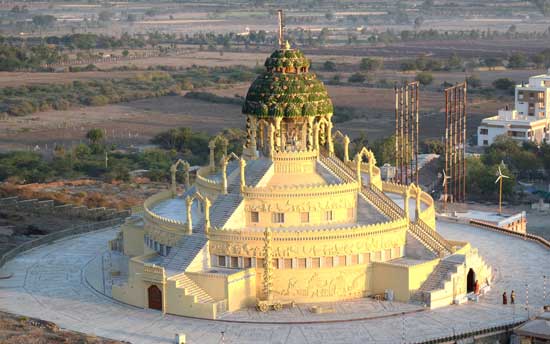
Day 4 : Palitana
Arise early to climb to the summit of nearby Shatrunjaya Hill- a very special and sacred site of the Jain people and home to over 850 temples. Although the climb up 3500 steps to the summit sounds daunting, it is not difficult and the rewards are great - however an early start is essential to avoid the heat of the day. The Temples range from the massive edifices at the top of the hill with intricate carving, detailed glass work and golden flagpoles, to tiny cave temples which line the route on the way up. If you are really not up for the climb, there are bearers (teams of 2 or 4) who will carry you (for a fee!) to the top in a ‘dholi’- a type of litter arrangement. Descend back down to Palitana at the foot of the hill and explore the market area of the town. After breakfast back at Vijay Vilas Palace, visit the Jain art museum in the town. And in the afternoon visit the Adipur village near the Palace. Overnight in Palitana.
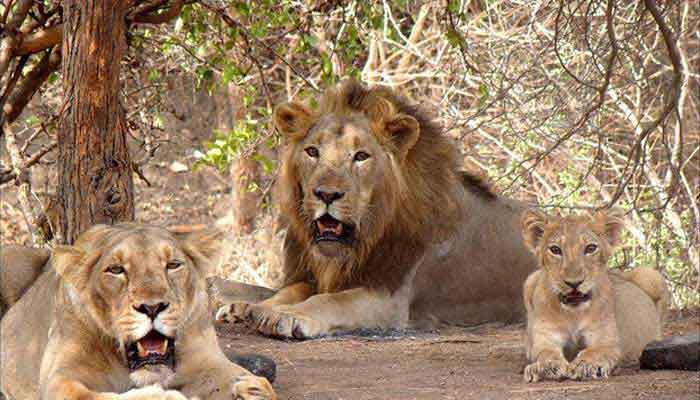
Day 5 : Palitana – Gir
After breakfast, head south towards Gir (250km), and arrive in time for lunch at Gir Birding Lodge, an orchard retreat at the forest gate. This is a wonderful place from which to visit the nearby Gir National Park - in this case ‘nearby’ means you can actually see the entrance gate to the park from the lodge’s dining room. In the late afternoon, take your first safari in the Park. Gir is the last refuge of the Asiatic lion and has a thriving population of leopards as well. The main prey of these top predators comes in the form of sambar and spotted deer, nilgai (blue bull- a particularly handsome antelope) and wild boar. Other mammals which may be seen include chousingha (the world’s only four-horned antelope) and chinkara (Indian gazelle) there are too many bird species to list here- suffice to say that Gir has one of the greatest concentrations of birdlife anywhere in India.Overnight at Gir Birding Lodge, Sasan Gir
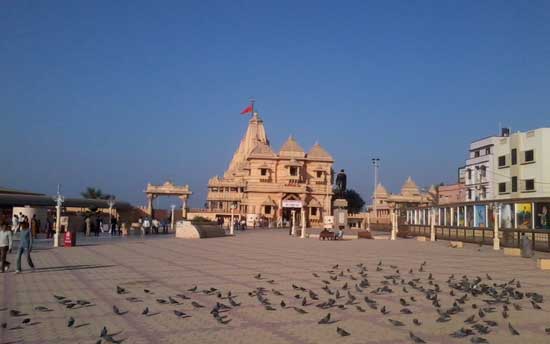
Day 6 : Gir
Morning and evening drives in Gir- in the later part of the visiting season (February-April) you should have plenty of chances to see lions. Earlier in the season, it might take a little longer, but there is still a high probability of seeing the Indian ‘king of the beasts’. In between the safaris, you can visit nearby villages, take an excursion to the shore temples at Somnath, 45km from the lodge, or just relax and enjoy the beauty of your surroundings. Overnight at Gir Birding Lodge
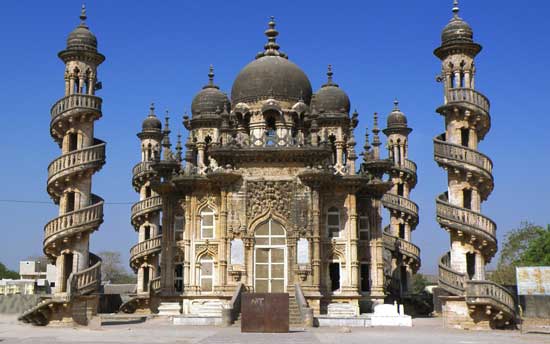
Day 7 : Gir – Junagadh - Gondal
A final jeep safari in the morning and then depart for Junagadh, one of the most historic places in Gujarat. Tour the Uparkot Fort, see the princely relics at the Durbarhall (a palace museum), and visit the flamboyant mausoleum (Maqbara) of the Nawabs (Muslim rulers). Continue to Gondal via the Khambalida Buddhist site arriving in time for lunch. Check into your accommodation here - another restored palace- and in the afternoon visit the Naulakha Palace in Gondal. The Palace, built in the mid-18th century is known for its fine carvings and a museum of princely memorabilia. Gondal is also famous for its Ayurvedic herbal medicine pharmacy, handloom weaving centre and handicraft emporia. In the evening visit the breeding centre of Kathiawadi horses and Gir cattle, and witness the sunset at a bird-rich lake. Overnight in Gondal.
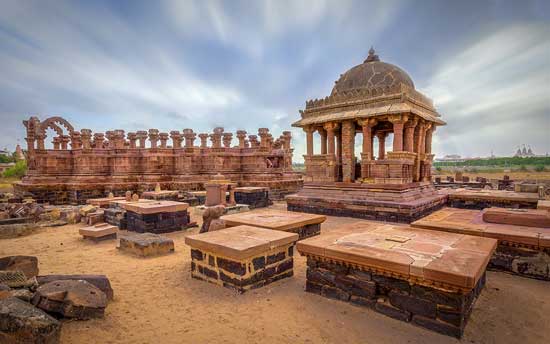
Day 8 : Gondal – Bhuj
After breakfast, drive to 260km to Bhuj calling in on the way at Rajkot to see the Watson Museum which has good examples of many Gujarati crafts on display. The drive to Bhuj gives you your first glimpses of the Rann of Kutch - the vast area of arid and semi-arid salt marshes which is the dominant feature of western Gujarat. Dotted with small villages and plied, as it has been for millennia, by the camel trains of the Rabari people, this harsh and seeming inhospitable landscape has a desolate beauty which is quite unique. On arrival in Bhuj, check in to your hotel and later visit some of the town’s museums and monuments. Later visit the local police headquarters to obtain the necessary permits to visit the outlying villages of Kutch, and visit the Qasab artisans cooperative on the outskirts of the city. Qasab is a significant undertaking by local people determined to keep alive and nurture the many unique styles of weaving, cloth-making, wood carving, leather work and other crafts of Kutch. Explore the market area of Bhuj in the evening and overnight in Bhuj.
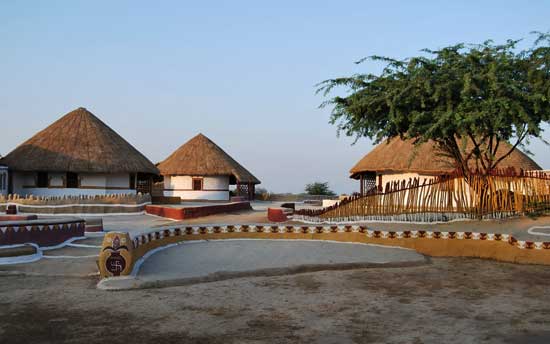
Day 9 : Shaam-e-Sarhad near Hodka
Venturing out of Bhuj into the northern hinterland of Kutch you are in for an unforgettable day of village visits and up-close interaction with the people of this region. Each group of tribal and semi-nomadic people in Kutch has a different artistic specialty - some are experts at embroidery, others focus on weaving, block-printing, Rogan (a highly unusual type of painting), wood carving and leather work. Despite an increasing number of visitors, this part of Gujarat retains a very ‘genuine’ feel- the kindness and welcoming nature of the people is striking. Your lunch stop, and later overnight accommodation, is at Shaam-e-Sarhad, a resort like no other- effectively a recreated desert village with luxury tents and bhungas (traditional mud-walled huts) encircling a central area set aside for eating and socializing. The resort is a community undertaking and all the staff are locals. While no comfort is spared, the emphasis is on working with the environment of this edge-of-the-desert location. Overnight at Shaam-e-Sarhad near Hodka.
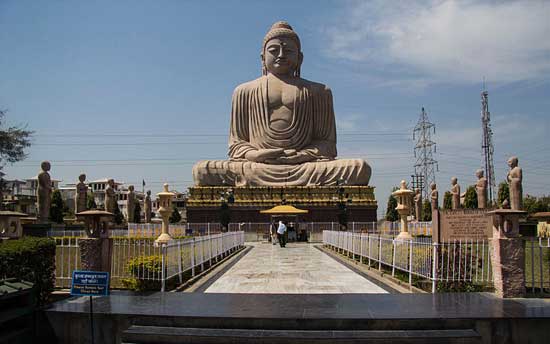
Day 10 : Bhuj – Mandvi
On the way back to Bhuj you will have the opportunity to visit more villages. Continue on past Bhuj to the seaside town of Mandvi, which is a tie-and-dye centre, and home to India’s longest private beach - an impressively deserted stretch of golden sand lapped by the tepid waters of the Arabian Sea. Your accommodation here is another deluxe tented camp. In the afternoon you may like to visit the nearby Palace or the town itself where dhows (Arab sailing vessels) are still built in the traditional fashion, constructed entirely without nails. Overnight at Mandvi Beach Camp.
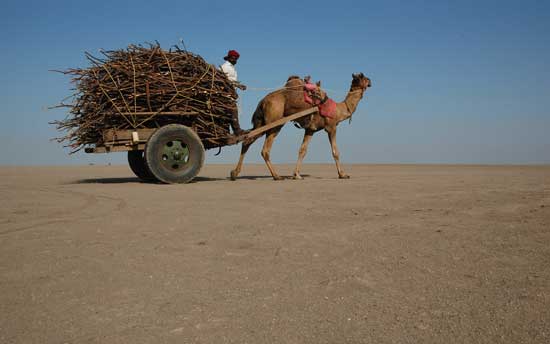
Day 11 : Mandvi – Dasada
Depart Mandvi after breakfast and reach Dasada in the early afternoon. The road traverses the neck of land between the Little Rann of Kutch and the even more immense Great Rann. On arrival in Dasada, check into your accommodation and later venture into the Rann for a jeep safari in search of Asiatic Wild Ass (Khur) and the many other species which occupy this difficult environment. The area is known for its rich birdlife and many rare species are found here. Return for dinner round the camp fire and overnight at Rann Riders, Dasada

Day 12 : Dasada – Danta
At Dasada, watch Rabari women at work on their distinct embroideries and visit other communities like the Mirs who make attractive bead bangles. Later depart for Modhera where the 11th century Temple is a marvel of Hindu architecture, and from there to one of Gujarat’s most impressive step-wells at Patan. Continue to Bhavani Villa, a heritage Homestay in Danta, home to the Maharana of this former princely state, Mr. Mahipendrasinh, and his family. The family estate still includes much of the agricultural land around the Bhavani Villa and one of the Maharana’s particular joys is showing guests around his horse stud. Bhavani is another example of the wonderful hospitality of the Gujarati people - you will be welcomed as an honoured guest and enjoy excellent food and good company. Overnight at Bhavani Villas, Danta
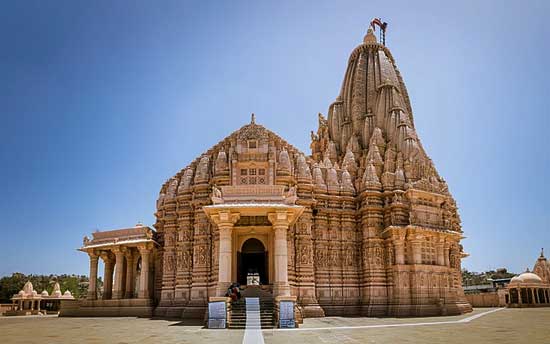
Day 13 : Danta – Ahmedabad
n the morning, take a walking tour around the estate to visit nearby villages and see the agricultural practices of the local people at close quarters. Return for a leisurely breakfast on the porch overlooking the town of Danta below, and then proceed to 11th century Kumbhariyaji and 12th century Taranga Jain temples with fine marble and stonework respectively. Reach Ahmedabad in the afternoon for connecting flight to Mumbai or Delhi for international departure. (This tour can continue from Danta into Rajasthan - it is less than 4 hours drive from Danta to Udaipur - the gateway to southern Rajasthan.)
